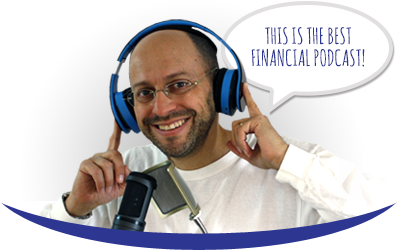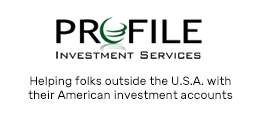
Your portfolio returns can be affected by not only owning the right investment, but by making sure it is in the right type of account.
Bob French, the Director of Investment Analytics at McLean Asset Management, gives insights on how investors can optimize their portfolio returns. Different investments grow at different rates, Bob helps investors put the right investment in the right type of account. He also shares the smartest withdraw strategy for retirees needing income (hint: it has to do with hiring a professional money manager).
The most important thing to know when moving your money from America to Israel
Doug has a list of tips for American expats (olim) who want to move their U.S. dollars abroad. He explains why it may be difficult to move money, and tells listeners how to avoid the delays and frustrations many international investors face. To access the whole list, click here.
To follow Bob French, visit his website retirementresearcher.com, or follow him on Twitter @Robert_French.
To learn more about Roger Whitney and his 5-minute retirement plan, go to rogerwhitney.com/5minuteretirementmakeover.
If you’re not already receiving updates on new episodes, sign up now, and as a special bonus, receive Doug’s free ebook The Retirement Planning Book.
Watch How to Optimize Portfolio Returns on YouTube.
Read the TranscriptInterview with Bob French
What do you do when you’re retired, and you need to withdraw money from your retirement accounts? What types of investments should a retiree have in their portfolio? Bob French explains.
Douglas Goldstein: I’m very excited to have on The Goldstein on Gelt Show, Bob French. who is the director of investment analysis at McLean Asset Management.
He also writes at retirementresearcher.com.
I think a lot of people need to be reading about retirement because there’s so much confusion. One of the things we talk about a lot on the show is the importance of saving for retirement.
One of the things, Bob, that you talk about is the importance of knowing how to get the money out of your retirement accounts.
What’s the best strategy for people who are at the age when they have to start withdrawing money from their retirement accounts?
What’s the Best Strategy When You Want to Withdraw Money from Your Retirement Account?
Bob French: This is something that we spend a lot of time talking about, largely because it’s one of those subjects you don’t think about, but when you do think about it, it seems relatively simple.
And then you think about it some more and it gets really complicated again.
If you’re purely looking at your investment accounts, you want to be looking at the totality of your whole retirement income situation more broadly.
Both your investment accounts, as well as reliable income sources such as a pension in U.S. Social Security, or any annuities that you might have, those things that have a guarantee but are also your rainy day funds.
The reserves is what we normally call them, but you really want to be focusing in on the tax situation, how to maximize the benefit you are going to be getting from using your different accounts in the correct order.
There’s some general guidelines, but just like everything with taxes, you really want to be looking at it with a CPA and looking at it from your own specific perspective.
Douglas Goldstein: Don’t try this at home, but what would you suggest, in general, people should be looking at?
Let’s say someone’s got a pension or a 401(k), and an IRA, and a Roth IRA. What’s the first place that he looks to get some money?
Bob French: Obviously, use your pension first.
You’ve got that money coming to you. When you do have to tap your investments, the general order is to use your taxable assets first, then your tax-deferred accounts, such as traditional IRA and traditional 401(k), and then your tax-exempt assets, like your Roth accounts.
The basic idea is to use the ones that are getting hit the most by taxes first. Your taxable accounts have that tax rate of each and every year. That’s reducing the amount they have to grow your-tax deferred accounts.
You got a pretty big wall up when you take that money out and your tax exempts are tax exempt. You want to get the most growth out of those things that you possibly can.
That’s the logic for the order. And it’s pretty straightforward if you’re just looking at it from that investment perspective.
Douglas Goldstein: How about what types of investments to have in the different portfolios?
Let’s say that you do a financial plan and you decide to keep it simple.
You want to have half of your money in stocks and half of your money in bonds. Just using a generic idea. Which account should you have which one in?
Bob French: This is something that a lot of people ignore, but it is really important, especially if you look at it over long periods of time.
It can impact what those required minimum distributions are once you get into retirement, because obviously different assets that you have are going to have different rates of return.
They’re going to grow at different rates.
What you want to be trying to focus on is maximizing the total return; the total net return across your portfolio.
What this really boils down to is that situation you just mentioned, half in stocks, half in bonds, where you’ve got a taxable account and the tax deferred.
You’re going to stuff as much of those bonds into that tax-deferred account as you possibly can and keep those stocks in your taxable account, because the tax drag on stocks is a lot lower than the tax drag on bonds in most cases.
You’re going to be taking a bigger penalty by putting those bonds in your taxable account than you would by putting the stocks in a taxable account.
Douglas Goldstein: I want to touch on something you just said, just to clarify.
Let’s say that you’re going to have two different asset classes, and we’re just oversimplifying for the sake of our discussion.
You have stocks, you have bonds, and you said to put the bonds into the IRAs because presumably, the tax on the current interest that you receive will then benefit from being inside an IRA, and you won’t have to pay tax on that.
Now that’s an interesting concept in a time when bonds actually pay pretty good yields.
But do you think that still applies today, when bond yields generally tend to be low and a lot of time stock portfolios have dividends that top the yield on bonds?
Bob French: Yes, I do, actually. Because I don’t know how the Israeli system is set up but in the U.S., with your tax-deferred accounts, the IRS wants to get paid and the government wants its money.
There’s these things called “required minimum distributions.” Once you hit 70 and a half, or the year you turn 70 and a half, you have to start taking money out of your traditional IRAs.
Generally, you’re going to want to reduce that amount, if at all possible, just for if nothing else, flexibility.
You have more control over your tax situation at that point. What you’re going to want to do is put those bonds into your tax-deferred accounts, or your traditional IRAs and 401(k)s so that those accounts don’t get as big.
It’s a very nice problem to have mentally, but it’s still a problem.
It’s still something you can be using to manage your situation. In fact, if we add in Roth accounts and your tax-exempt accounts, you’re going to want to stick the lower returning tax-inefficient assets into your traditional IRA, and the higher returning tax-inefficient assets into your Roth accounts.
You put things like REITs, or commodities, or different things like that, into your Roth accounts, and keep the bonds in your traditional IRAs and 401(k)s.
Douglas Goldstein: And again, the idea here is not that there’s a specific allocation that would be right for everyone, but rather, if you are going to have, for example, bonds. The logic is if you put the bonds into your traditional IRA, where eventually you’re going to have to start taking the money out as a required minimum distribution, because the IRS requires that of everyone, you’re going to want to be taking out smaller amounts from there so that you pay less in tax.
Whereas other assets might be taxed at a more friendly rate, like stocks, which would hopefully be taxed at a capital gains rate, which presumably is lower than the rate that you would pay on interest or dividends.
Those you would want to put into a taxable account. It also gives you more flexibility because if you have stocks, and maybe some of them went down one year, you could sell them at a loss. You could use that to offset any gains.
I will note for people living in Israel that it’s even more complicated, and I’m going to go back to Bob, to what you said earlier: “Don’t try this at home.”
Make sure you get a CPA involved because your accounts will be taxed, both in the U.S. and in Israel, if you are a dual citizen.
They don’t double tax but sometimes it can be a little complicated, and if you do it wrong, you end up paying tax twice.
Bob, let’s look over a different concept because I know you’ve written a lot in order to help people figure out how much money they can take out of their portfolio.
Some people are so nervous that they only want to live on the dividends, or the interest, and some people are looking for how they could really live it up.
There’s a difference between a safe withdrawal rate and an optimal withdrawal rate. How do you differentiate the two and how can a person decide?
What’s the Difference between a Safe Withdrawal Rate and an Optimal Withdrawal Rate?
Bob French: Yes, that’s the million-dollar question for a lot of people. Whenever you’re dealing with the stock market or financial markets in general, there are no guarantees involved here. Obviously people have been talking about the 4% rule that when you retire you can take out 4% of whatever you have every year, adjusted for inflation, and be pretty, pretty safe.
Wade found another older person who writes at retirementresearcher.com and is a principal at McLean. He’s starting to throw some water on that rule. Maybe that’s a little bit aggressive.
Maybe we might be looking at 3.5% or 3%. And I’m always hesitant to use numbers here. You’re safe with a 3%.
Well, that’s based on historical data. That’s the best data we got, but I don’t know that I’d rely on it to that level of specificity going forward. Maybe the U.S. just had a really, really good century and that’s getting picked up since most of our data starts in 1926 or 1927.
And maybe we’re not going to have such a great century going forward. Maybe our rates of return are going to be lower than they are. I don’t know. I have no idea what rates of return are going to be in the future.
I’m relatively confident that I’m going to be able to get this data. and this is why I mentioned at the beginning, you ought to be looking at the totality of your retirement income situation.
You’d be looking at those reliable income sources like your pension and annuities and anything you have with an actual guarantee on, as well as your investments.
You have those reliable income sources backstopping your core expenses, the stuff that you actually need to be able to live.
Then you have your investments, with your diversified portfolio filling out those less essential expenses. We actually use the Monte Carlo analysis to try and find out.
We’re not only so much looking at the distribution rate. What we’re looking at is, how likely is it that this plan we’re building for someone is going to succeed? We’re not looking at 2.5% of your money every year.
We’re looking at if you want to be able to spend $150,000 a year. You’ve got these reliable income sources and the rest has to be made up by your investments. Does that work? Is that feasible?
Douglas Goldstein: And that in fact is the $150,000 question for that client. Bob, you’ve actually covered a lot. You’ve also touched on issues like Monte Carlo simulations.
I know that you write a lot about this. Unfortunately, we are just about out of time now. Tell me in the last few seconds, how can people follow you and follow your work?
Bob French: Absolutely you can always find me at retirementresearcher.com. We’re both, Wade and I, and some other folks at the firm, putting out a lot of stuff all the time. There’s always new stuff to read there. You can also follow me on Twitter @Roberts_French. And we’d love to see you around and absolutely answer any more questions that anyone has here.
Douglas Goldstein: Super. Bob French, thanks so much for your time.
Bob French: Thank you, Doug.










